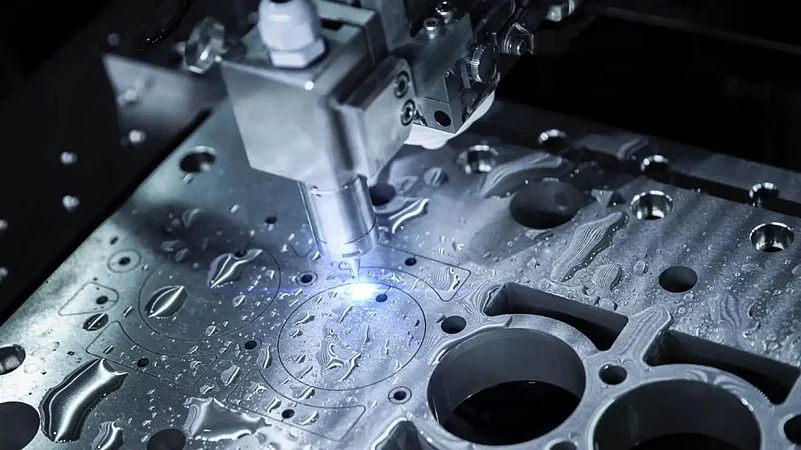Precision and dependability are not just aims in medical device manufacture; they are critical requirements that can mean the difference between life and death. CNC (Computer Numerical Control) machining is one of the many technologies used to meet these demanding criteria. CNC process enables the creation of complicated and extremely accurate medical equipment by utilizing advanced computer technology to precisely control machining tools. Keep reading this post to learn more as we examine the critical role of CNC operations in the medical device manufacturing business. We also focus on how precision machining helps to save lives.
The CNC Process
CNC machining uses computerized methods to operate machinery and tools. This method enables the automated, high-precision manufacture of components. The CNC process starts with constructing a comprehensive CAD (Computer-Aided Design) model, which acts as a blueprint for the device. This model is subsequently translated into a set of instructions known as G-code, which directs the CNC machine's movements.
The main steps in the CNC process include:
Design and programming: Engineers build a CAD model of the medical equipment, which is subsequently converted to G-code.
Setup: The CNC machine is configured with the proper equipment and materials.
Machining: The machine follows the G-code instructions and precisely cuts, drills, or mills the material to make the item.
Inspection and Quality Control: The finished product is thoroughly inspected to ensure that it satisfies all specifications and regulatory requirements.
Precision in Medical Device Manufacturing
Medical gadgets, from surgical instruments to implanted devices, require unmatched precision. Any variation from the design parameters can cause device failure, posing substantial dangers to patients. CNC machining tackles these issues by providing three major benefits:
Accuracy and consistency
CNC machines can achieve tolerances as small as a few micrometers. This level of precision is critical for components such as pacemaker housings or orthopedic implants, where even minor imperfections can jeopardize functionality.
Complex Geometries
Modern medical equipment can have intricate designs that are challenging to build using typical manufacturing methods. CNC machining excels at creating complex geometries, allowing for the production of advanced devices such as stents and prosthetics.
Material versatility
Medical devices are constructed from a wide range of materials, including stainless steel, titanium, and high-performance polymers. CNC machines can work with a wide range of materials while maintaining structural integrity and biocompatibility.
Scalability
CNC machining enables both prototype development and full-scale manufacturing. This adaptability is critical in the medical field, where devices must be extensively tested and validated before mass production.
Types of CNC Machined Parts
To demonstrate the life-saving impact of CNC machining in medical device manufacture, let's look at some real-world examples:
Orthopedic Implants: Orthopedic implants, such as joint replacements and bone plates, must be precisely measured to guarantee correct fit and function. CNC machining enables manufacturers to produce implants with the required precision, resulting in much better patient outcomes.
Surgical Instruments: Surgeons rely on very accurate tools to perform complex procedures. CNC-machined devices, such as scalpels and forceps, provide the precision and sharpness required for successful surgeries.
Dental Devices: Custom dental implants and orthodontic devices benefit from CNC machining's ability to create precise, patient-specific components. This customization improves the comfort and effectiveness of the gadgets.
Cardiac Devices: Components for pacemakers and cardiac valves must meet severe regulatory requirements. CNC machining guarantees that these devices are constructed to exact specifications, reducing the likelihood of failure during key moments.
The Role of Automation and Innovation
The incorporation of automation and cutting-edge technologies into CNC machining has significantly improved its capabilities in medical device manufacture. Advances such as 5-axis machining, which moves the cutting tool along five separate axes, have increased the ability to create complicated forms and structures. Furthermore, the use of real-time monitoring and feedback systems assures consistent quality and allows for the prompt identification of deviations from the desired requirements.
Furthermore, the use of additive manufacturing techniques in conjunction with CNC machining is transforming the production of medical devices. This hybrid approach enables rapid prototyping of complex components, which can then be finalized with CNC machining to reach the desired precision.
Regulatory Compliance and Quality Assurance
To ensure patient safety and gadget efficacy, medical device manufacturers must adhere to strict regulatory criteria. CNC machining is essential for fulfilling these criteria due to its inherent precision and reproducibility. Compliance with ISO 13485 (Quality Management Systems for Medical Devices) and FDA requirements is crucial, and CNC procedures are intended to meet these standards.
Quality assurance is included in every step of the CNC process. From the original design validation to the final product inspection, every step is properly documented and tracked. Advanced metrology instruments, such as coordinate measuring machines (CMMs), are used to ensure that each component meets the required dimensions and tolerances. This rigorous method reduces the possibility of faults and guarantees that each gadget works as intended.
The Future of CNC Machining in Medical Device Manufacturing
As the medical device industry evolves, the need for precision and innovation persists. CNC machining will likely play an important role in this evolution. Future developments could include deeper integration with AI and machine learning to optimize machining operations, improve predictive maintenance, and shorten manufacturing times.
Furthermore, the continued development of biocompatible materials and nanotechnology will broaden the applications for CNC-machined medical equipment. These advancements have the potential to create ever more sophisticated and effective gadgets, ultimately improving patient care and results.
Conclusion
CNC machining has established itself as a critical technology in the medical device production sector. Its capacity to manufacture highly precise and dependable components is critical for the creation of gadgets that can save and improve lives. From orthopedic implants to surgical equipment, CNC techniques provide accuracy that guarantees medical devices meet the highest quality and performance standards. As technology advances, CNC machining will stay at the vanguard of medical innovation, enabling the development of cutting-edge technologies that improve patient care and safety.

















